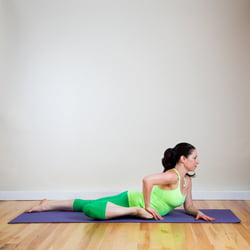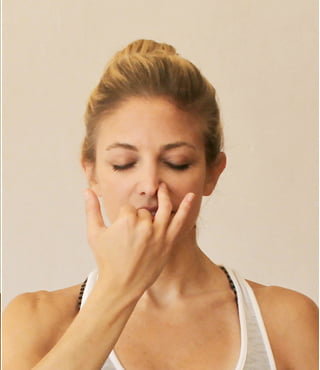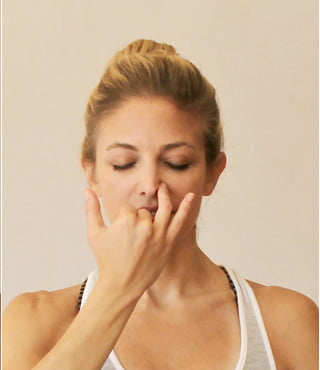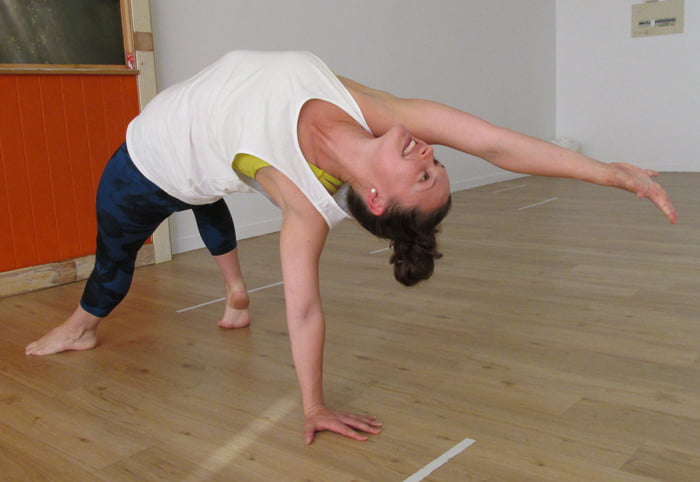 Happy new year! We’ve found the perfect way to launch yourself into 2015 – with our Zamasana of the Month for January, Wild Thing. Also known as Camatkarasana (say ‘cah-maht-kah-RAHS-anna’), Wild Thing is an invigorating chest-opening pose that will give you the sensation of stretching and reaching towards what is to come this year, in a motion of power and grace.
Happy new year! We’ve found the perfect way to launch yourself into 2015 – with our Zamasana of the Month for January, Wild Thing. Also known as Camatkarasana (say ‘cah-maht-kah-RAHS-anna’), Wild Thing is an invigorating chest-opening pose that will give you the sensation of stretching and reaching towards what is to come this year, in a motion of power and grace.
How to practice Wild Thing:
- Start in Downward-facing Dog, lifting your left leg in the air for Three-legged Dog.
- Stack your left hip over your right, bending your left knee so that your heel is near your buttock.
- Take a breath here, then shift your weight into your right hand.
- Slowly lower your left toes to the ground beside your mat as your flip yourself over and extend your left hand, reaching forward.
- Push down through both feet and your left hand as you lift your hips upwards towards the sky. Keep reaching your right hand forwards and slightly down.
- Find a backbend by drawing your shoulders towards your back and letting your head hang back, looking towards your extended hand.
- Come out of the pose by flipping yourself back over into Three-legged Dog.
- Repeat on the other side!
Let yourself be upside down and look at the new year from a different perspective as you practice Wild Thing! And maybe during this month you could set a personal challenge to connect to the ‘wild thing’ that is in all of us – something spontaneous or courageous, an act of bravery, or perhaps taking of your shoes and running through a field. You can be anything you want to be!
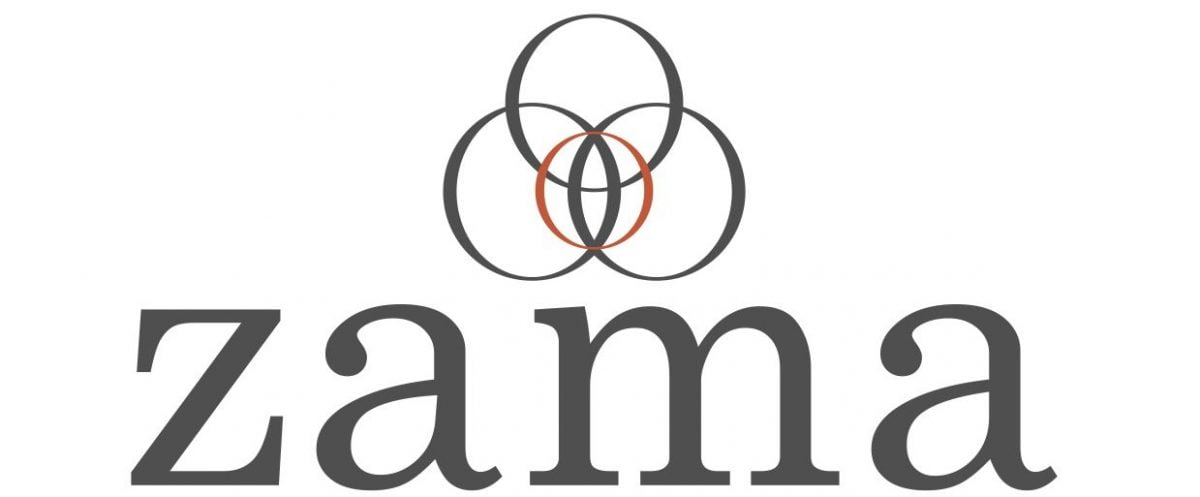
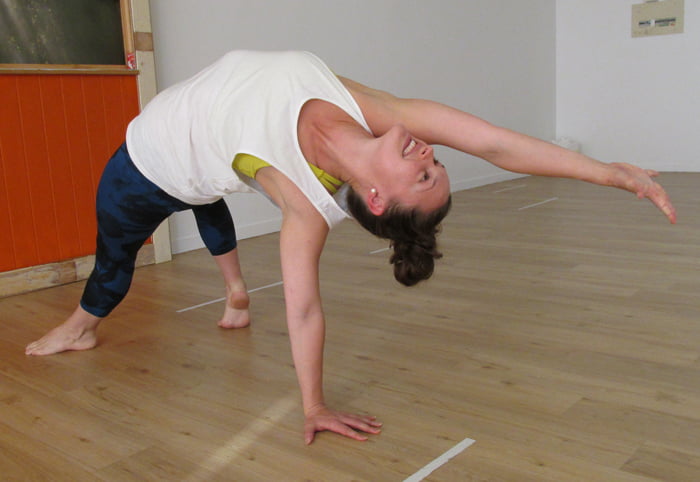
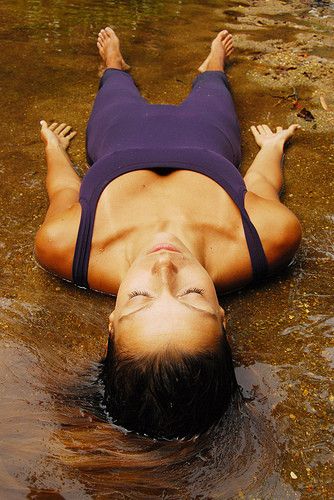 We’re bringing the year to a close just like we do in our yoga classes – with Savasana! Our zamasana of the month this December is arguably everyone’s favourite, the Corpse Pose. Savasana (which is also sometimes spelled as it pronounced, shavasana) is an incredibly important part of a yoga class, when the body and mind connect the work that was just done in the class.
We’re bringing the year to a close just like we do in our yoga classes – with Savasana! Our zamasana of the month this December is arguably everyone’s favourite, the Corpse Pose. Savasana (which is also sometimes spelled as it pronounced, shavasana) is an incredibly important part of a yoga class, when the body and mind connect the work that was just done in the class.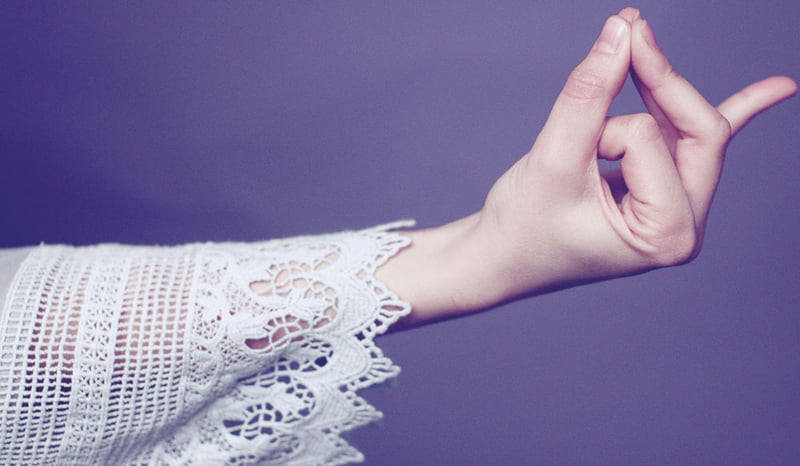
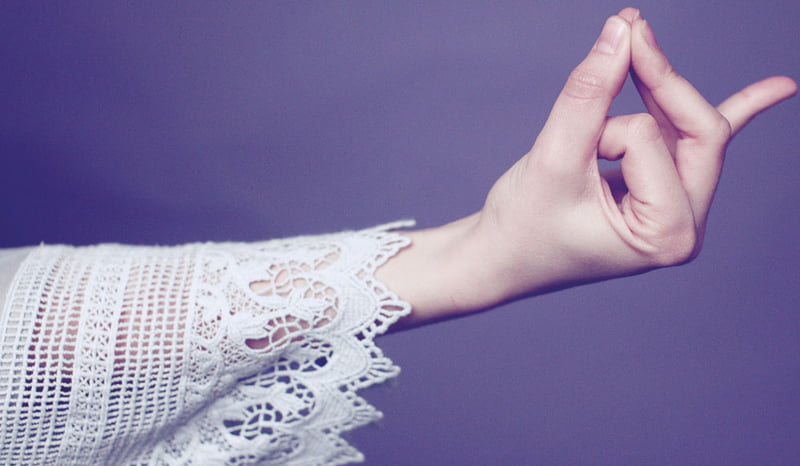
 Spring is here, and with it brings our cleansing and invigorating Zamasana of the Month for September – Malasana, a low squat pose. Also know as ‘Garland Pose‘ (due to its resemblance to a rosary, or garland), Malasana stimulates the digestive organs and works on cleansing the body by helping the movement of the metabolism. As you sit into Malasana you feel a release through the back of the body, as this low squat pose provides a great stretch for the sacrum, lower back and groin. Malasana is also an incredible hip opener, and helps to tone the belly.
Spring is here, and with it brings our cleansing and invigorating Zamasana of the Month for September – Malasana, a low squat pose. Also know as ‘Garland Pose‘ (due to its resemblance to a rosary, or garland), Malasana stimulates the digestive organs and works on cleansing the body by helping the movement of the metabolism. As you sit into Malasana you feel a release through the back of the body, as this low squat pose provides a great stretch for the sacrum, lower back and groin. Malasana is also an incredible hip opener, and helps to tone the belly.
 A traditional breath in yoga is the bhastrika pranayama (pronounced bah-stree-kah), also known as ‘the bellows breath’ or ‘bellows breathing’. As winter draws to a close and the last of the winter illnesses lurk around, bhastrika pranayama is an ideal Zamasana of the Month for August as it cleanses the body through its vigorous and dynamic movement that thoroughly clears the respiratory system and increases the body’s vitality. The bhastrika breathing enriches and enhances the clarity of the mind, and brings strength to the nervous system.
A traditional breath in yoga is the bhastrika pranayama (pronounced bah-stree-kah), also known as ‘the bellows breath’ or ‘bellows breathing’. As winter draws to a close and the last of the winter illnesses lurk around, bhastrika pranayama is an ideal Zamasana of the Month for August as it cleanses the body through its vigorous and dynamic movement that thoroughly clears the respiratory system and increases the body’s vitality. The bhastrika breathing enriches and enhances the clarity of the mind, and brings strength to the nervous system.